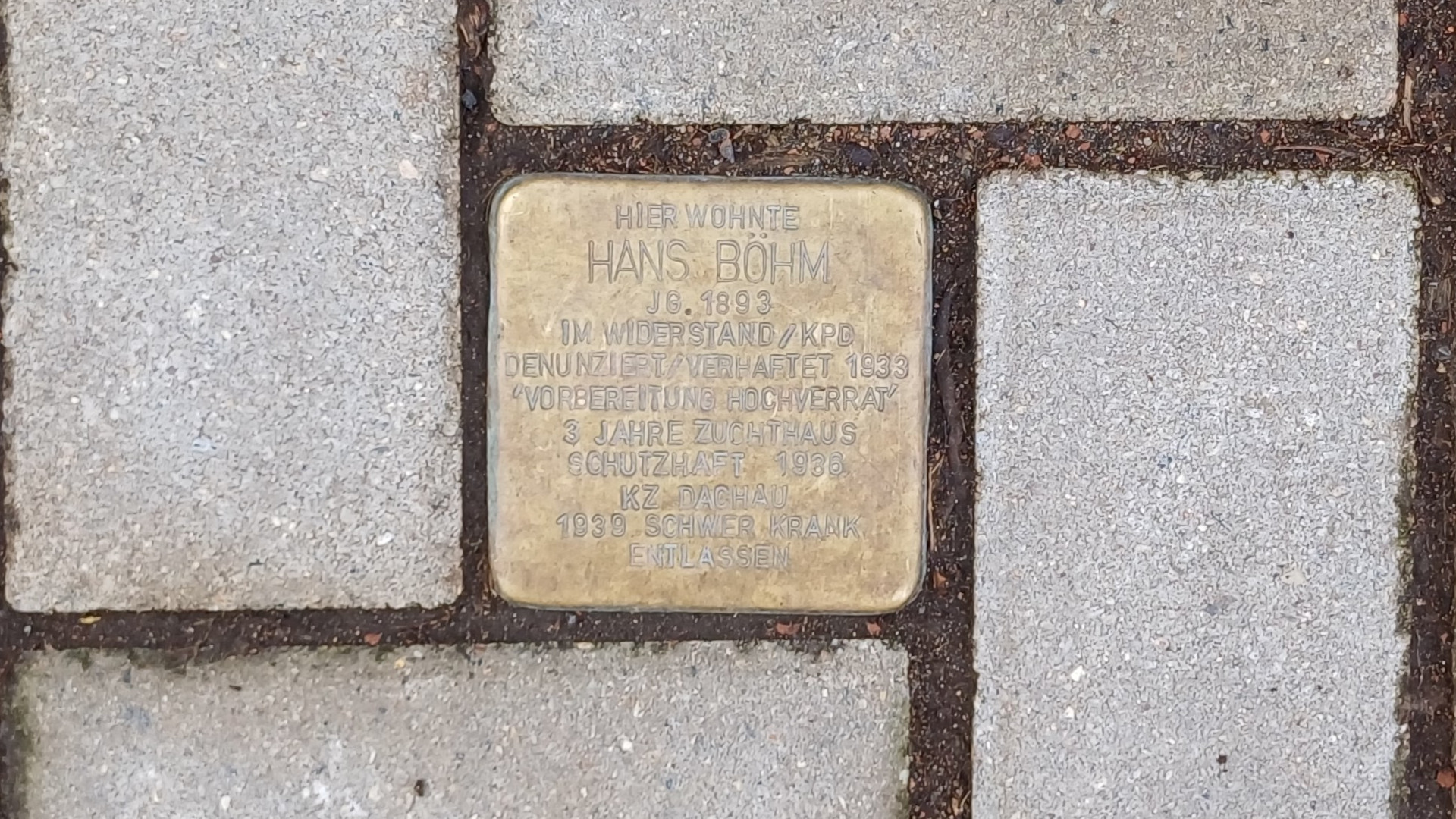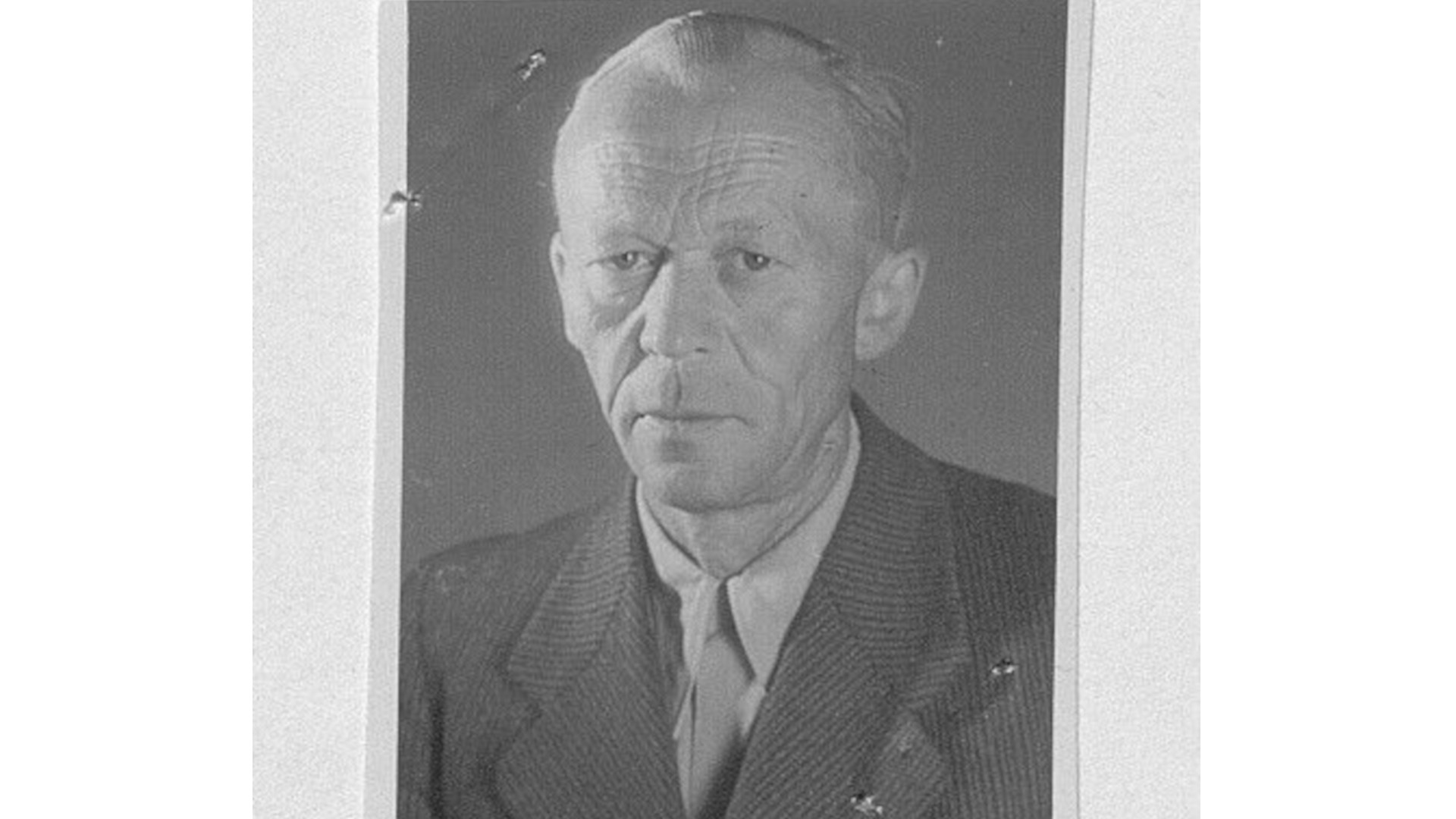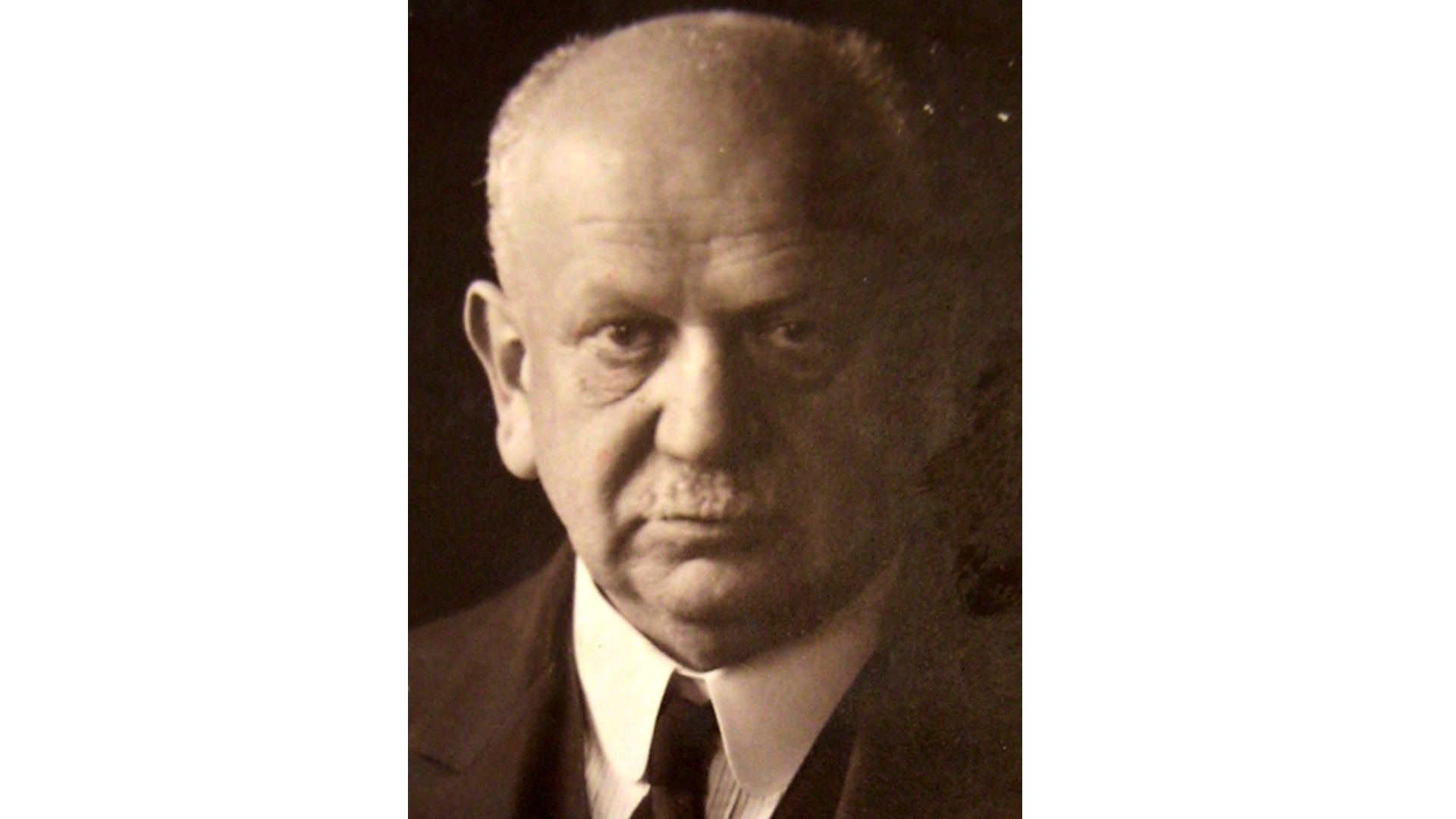| Location of stone: Hintere Cramergasse 22 | District: St. Peter |
| Sponsor: Rotary Club Nürnberg-Kaiserburg | Laying of stone: 26 May 2023 |
Biography
On 26 May 2023, Gunter Demnig laid ten stumbling stones in Nuremberg, five of them in memory of individuals who, through their opposition to the Nazis, became victims of the National Socialist state. The biographies were researched by a P-Seminar at Nuremberg’s Hermann Kesten College, led by Dr Maren Janetzko and Dr Pascal Metzger (Geschichte Für Alle / History for Everyone). One of the biographies was that of Hans Böhm, who was severely mishandled in Dachau concentration camp.
Hans Böhm was born on 1 September 1893 in Windsheim. He lived with his wife Anna and his daughter Doris at Hintere Cramergasse 22. Böhm ran his own hairdressing business. He was a member of the German Communist Party. In the summer of 1933, he continued to distribute communist publications, including the “Red Flag” (“Rote Fahne”), although this activity had been banned by the state. An acquaintance denounced him and he was consequently sentenced to three years’ imprisonment by the Nuremberg Special Court on 4 August 1933, which he served in St. Georgen-Bayreuth Jail. After his release, the Nuremberg Gestapo took him into “protective custody” and he was sent to Dachau concentration camp. He was released from there, seriously ill, in February 1939.







